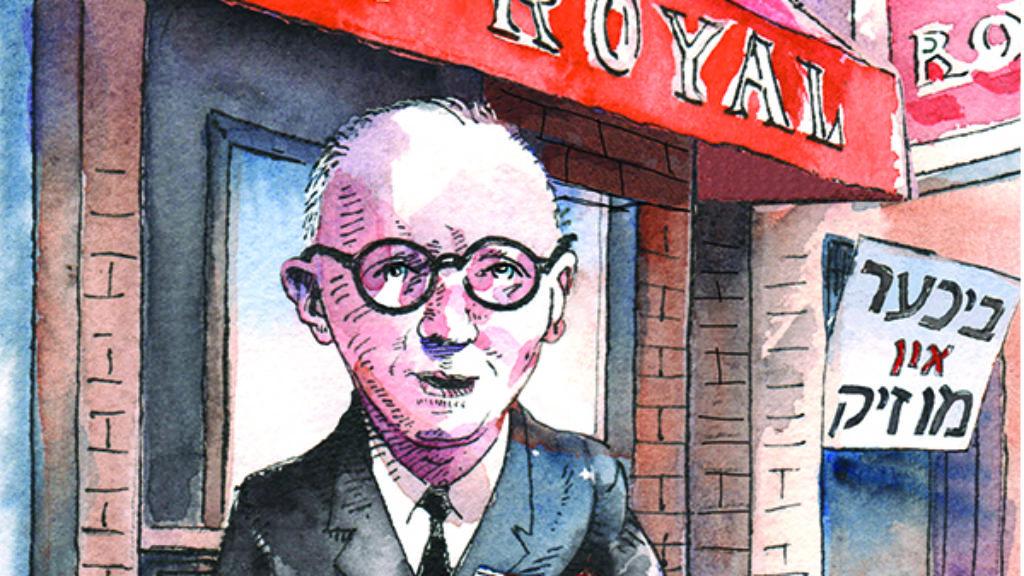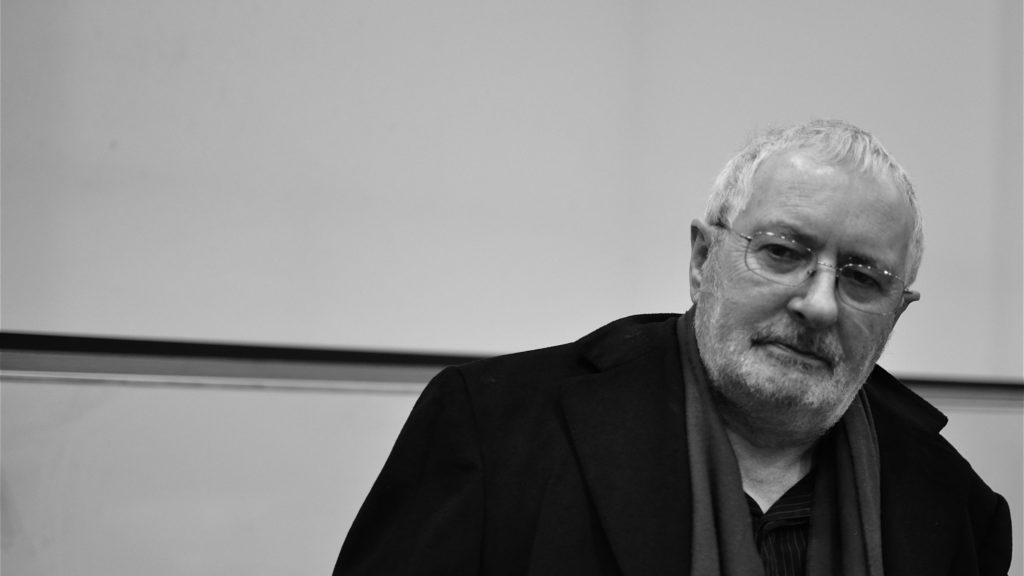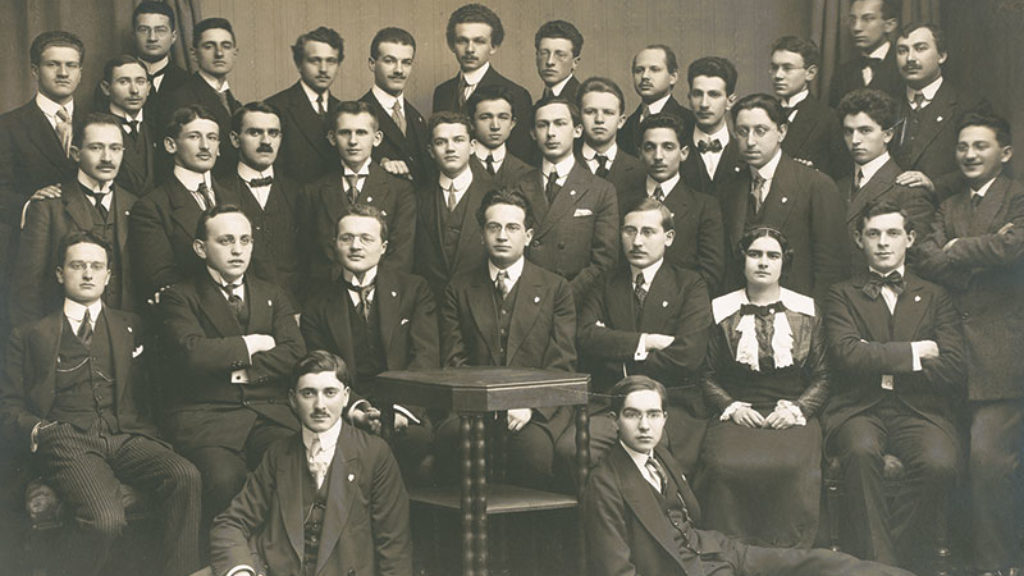Salsa and Sociology
When I was a child, eight or nine maybe, I evolved a theory about different kinds of Jews, based, more or less, on the hot sauce we kept on our table. The brand of salsa my mother always bought featured a picture of a thermometer on the side. The mercury in this particular thermometer rose from Mild to Medium to Hot, and it occurred to me, for I thought as a child, that the three basic kinds of Jews—or more precisely synagogues to which the Jews I knew belonged—could be placed on a similar continuum. Reform Jews were Mild, Conservative Jews were Medium, and Orthodox Jews were Hot.
If pressed to say what exactly I thought what was being measured that was supposed to be analogous to the heat of chili peppers, I guess that I would have said something about the amount of “Jewish stuff” one did or was required to do. If pressed further, I probably would have put my family somewhere between Medium and Hot. The theory was descriptive, not prescriptive; I had, as far as I can remember, no desire to be the religious equivalent of tongue-scaldingly habanero-hot.
Around this time, my mother drove us across the Bay Bridge to participate in a rally for Soviet Jews at Emanu-El, the big, old Reform Temple in San Francisco, which was founded in 1850. By American Jewish standards it’s practically a medieval cathedral. Certainly that’s what it felt like to me. You could fit half a dozen of our little East Bay shuls inside it, and the pillars stretching up to a magnificently vaulted ceiling seemed as tall to me as the redwoods of Tilden Park, if not the cedars of Lebanon. This, together with other experiences, spurred me to add a corollary to my theory: The wealth of synagogues was inversely proportional to their religious “heat.”
My childish religious heat map fit the folk taxonomy implicit in the everyday speech of American Jews pretty well. Thus, when I heard someone describing themselves or others as “very Reform,” it never meant that prophetic ideals of justice were discussed at the dinner table, or that the works of Abraham Geiger were on the bookshelf. It meant that they did not lead markedly Jewish lives. There is even a whole class of predictable Jewish jokes based on this: “How Reform are they? So Reform that . . . ”
At some point, however, I put away my childish theories. I met learned and serious liberal Jews on the one hand and prayed in imposing, wealthy Orthodox synagogues on the other. Moreover, when I later studied the ideological origins of the different movements, I came to understand that there was no single scale on which they all could be ranged. The architects of the Reform movement did not regard themselves as “Very Mild” on some halakhic heat scale; the Conservative movement did not concede that they were any less devout in their commitment to Jewish law, properly—that is historically—understood, than the Orthodox, not to speak of Reconstructionism and the many varieties of Jewish secularism, including classical Zionism. (I knew a woman in Los Angeles who dropped a guy because he confused Jewish Bundists with Buddhists at the Shabbos table.)
And yet. In some respects, the salsa sociology explained parts of my particular American Jewish experience better than the ideological self-understandings of the movements. For instance, I’ve known many ba’alei teshuvah, who have “returned” to traditional religious practice, sometimes moving from Reform through Conservative Judaism before arriving at Orthodoxy. Rarely, even among intellectuals, is such a move best characterized as one in which the ba’al teshuvah first thinks that halakha is no longer the best way to express Jewish social and spiritual ideals in the modern world, then decides that it is but that halakha must be understood as a dynamic historical process, and, finally, comes to believe in an eternal law revealed at Sinai.
A better description of the process is that such people increasingly wanted their everyday lives to be determined by their Judaism, and they found this in Orthodox communities of one kind or another. I think this is also true of the many people I’ve known who grew up in the Conservative movement (Solomon Schechter schools, Camp Ramah etc.) and now find themselves identifying as Orthodox. The great sociologist Émile Durkheim spoke of “social facts,” beliefs, norms, and practices with the power to structure individual lives. One way to describe what the ba’al teshuvah is looking for is a way to make his or her Judaism into a real, brute social fact.
I was talking about this with a prominent American-Israeli journalist the other day, who said “Sure, if you want to be totally Jewish, you’ve got three choices: You can become a Reform or Conservative rabbi, you can become Orthodox—or you can make aliyah.” One could object that one can also become a professor of Jewish studies, but that’s not really a counter-example. The best counter-example comes from the world of independent minyanim, in which many participants live intensely Jewish lives of ritual, study, and prayer while retaining a non-Orthodox approach to belief and practice. Whether the minyanim, and allied institutions such as Mechon Hadar and Limmud, can alter the social dynamics of American Jewry remains to be seen.
Two realizations dawned on me in reading the Pew Research Center’s recent report, “A Portrait of Jewish Americans.” The first was just how small a Jewish bubble I have been living in. While I’ve been praying in Orthodox shuls with ba’alei teshuvah and Ramah campers, the American Jewish world has been swiftly moving in the opposite direction. As the report states:
Within all three denominational movements, most of the switching is in the direction of less-traditional Judaism . . . one-quarter of people who were raised Orthodox have since become Conservative or Reform Jews, and 28% of those raised Reform have left the ranks of Jews by religion entirely.
One feels the sheer gravitational force of American Jewish life in such sentences. By contrast, the move in the other direction begins to look insignificant, a counter-cultural trickle.
My other realization was, of course, that my childish theory was closer to the truth than my later, sophisticated adult view of American Jewish life. The religious ideologies that I had taken so seriously look epiphenomenal, like froth on the waves. Take, for instance, the following question posed by the Pew researchers: “How important is religion in your life?” Eighty-three percent of Orthodox Jews answered very important, less than half of Conservative Jews (43 percent) agreed, and only 16 percent of Reform Jews responded that religion was very important to them. Of Jews with no denominational affiliation the number was 8 percent.
Since the Pew researchers were certainly not defining the religion in question as Orthodoxy, it is hard not to conclude that some like it Hot and we call those Jews Orthodox, and some like it Mild, and we call those Jews Reform. Conservative Jews, as Daniel Gordis argues in these pages, find themselves in the rapidly shrinking middle. As for the Jews of “no religion,” as Don Seeman shows, these would appear to be not Jewish secularists (as the Pew researchers sometimes sort of imply) but mostly Jews “looking for the exit door.” Upon reflection, I find the implications of the hot sauce model of American Judaism chilling.
Comments
You must log in to comment Log In
Suggested Reading

A Letter to Mama
A story by Isaac Bashevis Singer, with an introduction by David Stromberg.

Nostalgia for the Numinous
In the beginning there were the angry atheists. Terry Eagleton is more melancholy: “Atheism is by no means as easy as it looks.”

From the Great War to the Cold War
The facts of Hans Kohn’s life are so extraordinary that it almost seems as if the first half of one remarkable figure’s biography had been spliced together with another’s in the second part.
Pro-Creation
Economist Bryan Caplan thinks parents “overcharge” themselves when it comes to investing in their children. Glückel of Hameln knew better.
Yirmi
It's not the case that American Judaism is rapidly moving in the opposite direction. away from Orthodoxy. The population share of the Orthodox is increasing, and Orthodox Jews are increasingly less likely to go off the derech. Pew's methods are probably a bit misleading -- it's unclear how they sampled the Orthodox community, and some of their results are a bit odd. However, it's true there's not a mass movement of non-Orthodox towards Orthodoxy at the moment, even if some continue to move in that direction.
I wouldn't say the move from Reform to Conservative to Orthodox is necessarily about making Judaism more part of one's everyday life, though that's certain true. It's about finding a place where commitment to and enthusiasm about Judaism are normal. Elsewhere they are seen as weird. Even the minimum act of staying Jewish -- that is, marrying Jewish, being involved in a shul, and successfully raising your kids to do the same -- is a fairly rare thing to accomplish nowadays, without being Orthodox. One must have enthusiasm and commitment to resist assimilation in these conditions of exile. For theological and sociological reasons, neither Conservative or Reform is capable of generating that enthusiastic commitment.
Just as Jewish law as we know it today was being put onto paper, in the Mishnah and Gemara, the long-prophesied exile was beginning, scattering us to distant places throughout the world. Devotion to halacha, based on a belief that it was the word and the will of G-d, was what sustained us and allowed us to resist assimilation and miraculously survive all the terror and oppression of 2000 years of exile. It should not be surprising that attempts to abandon traditional halacha or rework it dramatically result in extinguishing its power.
davidsfarkas
Interesting musings. It would be nice indeed if independent minyanim allowed one to lead a full life as a Jew in a non-orthodox setting. However, all of history shows it will never happen. Even today, the total number of people across the country who participate daily in such minyanim is less than the membership of a single medium to large sized orthodox shul. Independent minyanim, a passing fad largely limited to NY and San Francisco/LA, is inherently incapable of transmission to another generation. As some would say, they have no "kiyum."
As for the Pew study - Twain's dictum (or is it Disraeli's?)on statistics jumps to the fore. 25% of people raised orthodox are today Reform and Conservative? Seriously? There's no need to spend time on it, because I'm late to the party here, and the Pew study has already been hacked to death. Suffice to say, no one should be changing life-long perceptions because of it.